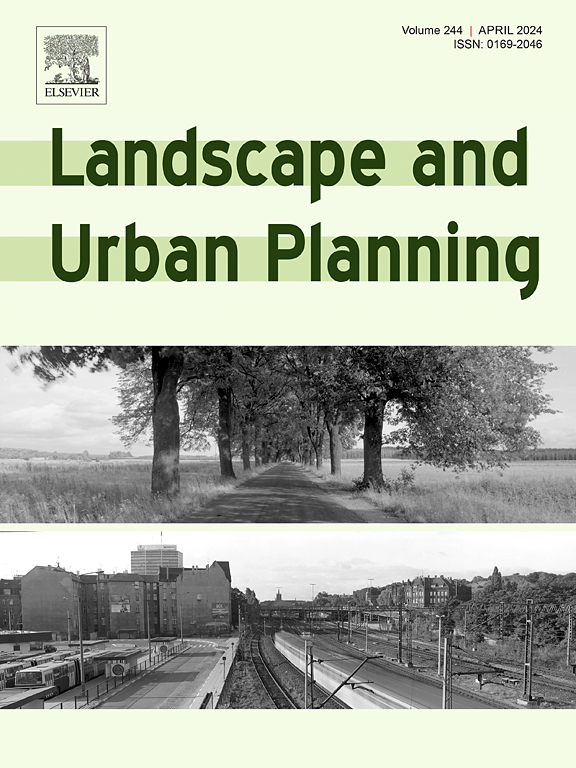Narratives of exclusion: A photovoice study towards racial equity and justice in public urban greenspaces
IF 7.9
1区 环境科学与生态学
Q1 ECOLOGY
引用次数: 0
Abstract
Introduction
During the COVID-19 pandemic, public urban greenspaces were sought as places of respite. However, deep inequities surfaced regarding who had access to safe high-quality greenspaces. The Park Perceptions and Racialized Realities study explored the experiences of racialized people in public urban greenspaces in Toronto, Canada.
Methods
This qualitative, community-based participatory action research took place in two neighbourhoods. Adapting photovoice methodology, participants were invited to (a) go on two individual greenspace visits, taking photographs in response to prompts on their experiences, and (b) participate in an online semi-structured interview to debrief their photographs and experiences. Eighteen racialized participants took over 200 photographs and videos, which were collaboratively thematically analysed by a community working group. This approach informed a deeper thematic analysis focused on racial justice and equity.
Results and discussion
Findings were mapped onto four environmental justice principles: distributional, procedural, recognitional, and restorative. This framework allowed for findings to contribute to environmental justice discourse on urban greenspaces, leverage Critical Race Theory, and offer action-oriented considerations for greenspace design and planning that center racialized experiences.
Conclusions
Racialized residents enjoy using public urban greenspaces but face barriers, including unequal provision, limited access, maintenance inequities, exclusion from design and planning processes and unmet needs. Greenspace planning often neglects lived experiences and reinforces systemic inequities derived from racism, falling into the same traps and tensions that Critical Race Theory has identified in other disciplines such as colorblindness, interest convergence and structural determinism. A critical race lens provides a critical, justice-oriented framework for improving equity in greenspaces.
排斥叙事:在城市公共绿地中实现种族公平与正义的摄影选言研究
在 COVID-19 大流行期间,人们寻求城市公共绿地作为休憩场所。然而,在谁能使用安全优质绿地的问题上却出现了严重的不平等。公园认知与种族化现实》研究探讨了种族化人群在加拿大多伦多城市公共绿地中的体验。
本文章由计算机程序翻译,如有差异,请以英文原文为准。
求助全文
约1分钟内获得全文
求助全文
来源期刊

Landscape and Urban Planning
环境科学-生态学
CiteScore
15.20
自引率
6.60%
发文量
232
审稿时长
6 months
期刊介绍:
Landscape and Urban Planning is an international journal that aims to enhance our understanding of landscapes and promote sustainable solutions for landscape change. The journal focuses on landscapes as complex social-ecological systems that encompass various spatial and temporal dimensions. These landscapes possess aesthetic, natural, and cultural qualities that are valued by individuals in different ways, leading to actions that alter the landscape. With increasing urbanization and the need for ecological and cultural sensitivity at various scales, a multidisciplinary approach is necessary to comprehend and align social and ecological values for landscape sustainability. The journal believes that combining landscape science with planning and design can yield positive outcomes for both people and nature.
 求助内容:
求助内容: 应助结果提醒方式:
应助结果提醒方式:


